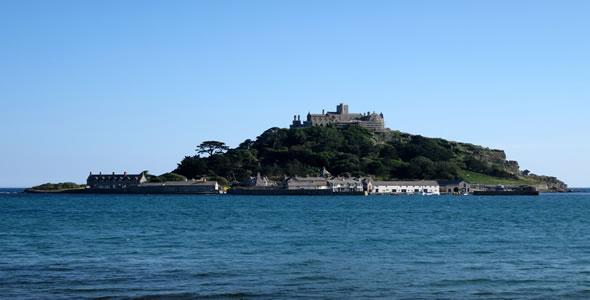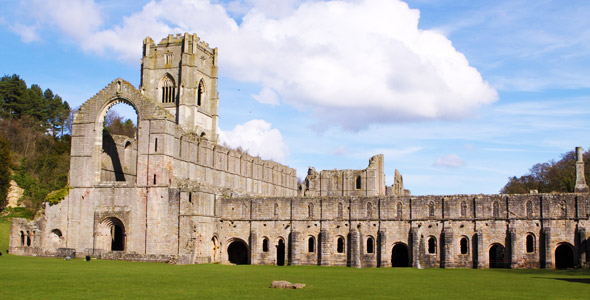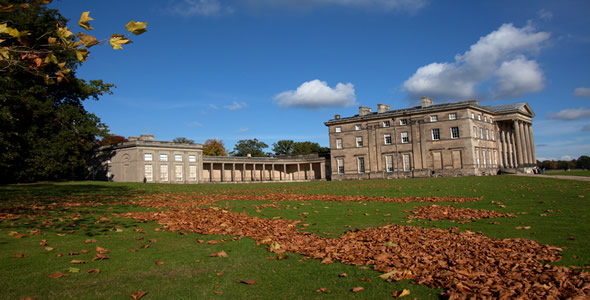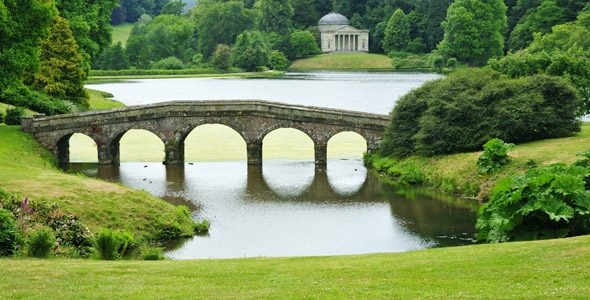
Name: St Michael’s Mount
Address: Marazion, Cornwall, TR17 0HT
Telephone: 01736 710507
St Michael’s Mount is a tidal island that is located 400 yards off the coast of Cornwall. It is linked to Marazion on the Cornish mainland by a man made causeway which is passable between mid-tide and low water.
St Michael’s Mount is a location that is steeped in history and mythology. It is understood that is was mentioned by both Pliny the Elder in his Naturalis Historia (IV:XVI.104) and Diodorus Siculus in Ictis. Both men had access to the texts written by the Greek Pytheas in the fourth century BC who is said to have visited the island. If this is the case, then the mentions would lead St Michael’s Mount to be one of the first recorded locations in Western Europe (certainly in Britain).
Christianity played an important part on the island with the claim that St Michael appeared to local fisherman on the island in the fifth century and from the 8th to 11th centuries it is believed that there was a prominent monastery present. Later Edward the Confessor is thought to have given St Michael’s Mount to the Norman abbey of Mont Saint Michel. Monastic buildings were built within the 12th century which still stand to this day and are the oldest structures on the island.
The island was used as a major link in England’s defences against the Spanish Armada. In 1588 a beacon that was lit on the church tower heralded the approach of the Spanish fleet and it was also used as a royalist stronghold in the English Civil War until the surrender of the castle in 1646.
The chapel and the castle on St Michael’s Mount is the official residence of the “tenant” Lord St Levan although he no longer resides on the island and there are numerous relics, antique furniture and armour still kept in the castle. The chapel of St Michael built in the 15th century served as guidance for ships and Chapel Rock on the beach marks a shrine that is dedicated to the Virgin Mary where pilgrims would stop to worship before they descended on to the Mount.
St Michael’s Mount is owned by the St Aubyn family and was first sold to Colonel John St Aubyn in 1659. James St Aubyn (the nephew of Lord St Levan) took up residency on the Mount in 2004 and access to the Mount is operated in conjunction with the National Trust.
What’s There?
- Spectacular views from St Michael’s Mount of Mount’s Bay on the Cornwall coast.
- A historic castle containing important relics and antiques.
- Walk the causeway that separates the island from the mainland in low tide or take a breathtaking boat trip.
- Find the giants heart in the path to the castle.
- See the plaster frieze showing medieval hunting scenes in the Chevy Chase Room.
- Eat in the Island Café or Sail Loft Restaurant (both licensed for alcohol).
- National Trust shop.
- Go to the Island shop which offers locally produced gifts and art.
- Parking in Marazion available (opposite to the Mount).
- Baby changing facilities.
- Children’s quiz and trail.
Trivia
In film, St Michael’s Mount was used as Castle Dracula in the 1979 film Dracula and in the 1983 James Bond film Never Say Never Again a scene where two missiles were seen flying over the English countryside and out to sea were seen flying directly over St Michael’s Mount.
Only recently it has been discovered in archives that the Nazi foreign minister at the time of the Second World War, Joachim von Ribbentrop, had desired to take up residence on St Michael’s Mount after the successful Nazi invasion of England.
Mythological legend states that St Michael’s Mount was once home to a giant named Cormoran who used to wade ashore to mainland Cornwall and steal livestock to satiate his substantial appetite. A local lad called Jack rowed ashore to the Mount and dug a deep pit whilst the giant was sleeping. As the sun rose, Jack sounded a loud horn which startled and woke the giant who lumbered down the Mount and upon being blinded by the sun he fell into the pit and died – and there started the legend of Jack the Giant Killer.
Prices
Standard adult admission is £8.75 to see the castle and garden. Each child costs £4.25 and a family ticket costs £21.75.
Free admission for National Trust members.
See more information on National Trust Membership.



